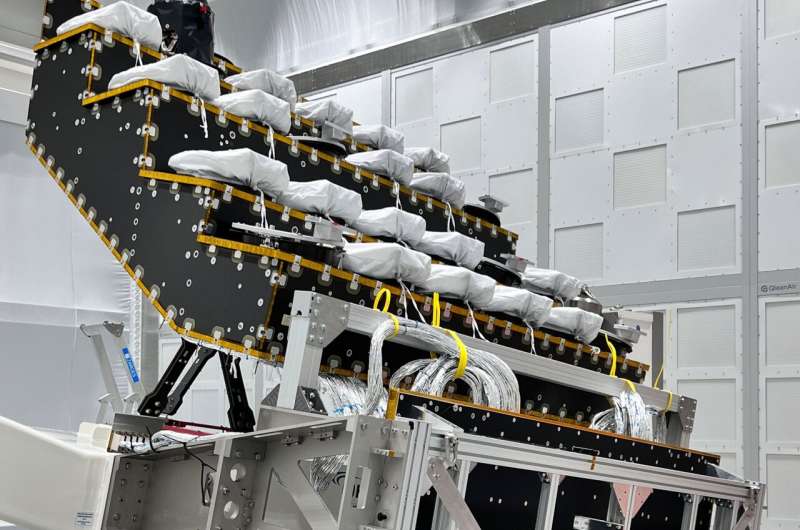This article has been reviewed according to Science X's editorial process and policies. Editors have highlighted the following attributes while ensuring the content's credibility:
fact-checked
trusted source
proofread
Plato camera integration begins

The activities to integrate Plato's cameras have started in OHB's Space Center & Optics facility in Oberpfaffenhofen, Germany. One by one the cameras are attached to Plato's optical bench, the surface that keeps all cameras pointed in the right direction. The first of 26 cameras has now been successfully integrated.
Plato will use 24 'normal' cameras and two 'fast' cameras to look at more than 100,000 stars and search for planets around them. The mission uses the transit method to characterize these planets; when planets pass by the face of their host stars, they dim the starlight we receive. By studying this dimming effect, we can learn about a planet's size, mass and density.
During the four-year mission, the cameras will use a special pointing technique to look at the same stars for a long period. Together, the 26 cameras can image about 5% of the sky at once.
Plato's scientific payload, consisting of the cameras and electronic units, is provided through a collaboration between ESA and the Plato Mission Consortium. This Consortium is composed of various European research centers, institutes and industries.
Provided by European Space Agency





















